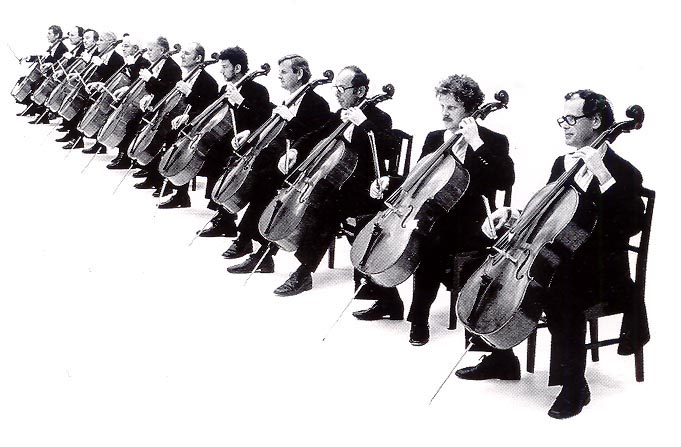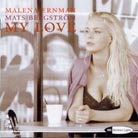|
This review page is supported in part by the sponsor whose ad is displayed above
|
|||||||||||||||
 |
|||||||||||||||
| Whitewater & Inner Spirit Mentally well prepared, I brought the speakers into my small room and let them pay homage to my tube amps. The speakers in residence are of course the Loth-X BS-1 and all other small visiting speakers have felt very much at home with their diagonal setup. Firmly set on 28-inch stands, the rear ports of the Inner Spirit and Whitewater backed off the 45-degree wall by 2 or 3 inches over 2 feet. The parade of wooing tube amps included the Dared VP-16 (6V6GT push-pull 12 wpc) and the Dared VP-20 (6L6G ultra-linear push-pull 18 wpc). The only SET amp in my arsenal was the sweet and tender Dared MP-2A3, which apparently has very good synergy with Omega speakers as testified to by one of Louis Chochos' dealers in Europe. |
|||||||||||||||
 |
|||||||||||||||
I have to admit that my passion for single drivers was rekindled with a strike-anywhere match. The Dared MP-2A3C/Whitewater combo was magical to say the least, especially when I switched from digital to analog using the Denon DP-59L turntable, Denon DL-302 moving coil phono cartridge and Ensemble PhonoMaster phono preamp. It's not so much the warm midrange -- I shouldn't expect that with such a small enclosure -- but the purity of sound. True, it couldn't compete with NuForce/Mark & Daniel for ultra resolution and grandeur. But the spotlessly clean presentation was arresting. Transient staccatos were lightning fast and direct, tailing off with the right amount of decay. It reminded me how much I prefer smaller enclosures to huge back-loaded horns or complex transmission lines, which admittedly |
|||||||||||||||
 |
|||||||||||||||
| enrich the bass and midrange but somehow sound too much like boom boxes to me. If my memory serves me right, one thing I didn't like about the old Omegas was that they were leaning too much forward and were too shallow in layering. The Unity Whitewater and Inner Spirit seemed to solve this criticism with their rear-ported designs. They reconstructed a deep soundstage and filled it with detailed spatialization and localization. I picked two LPs of the same composition to compare: Rossini's Complete Sonatas for Strings played by Accardo/Gazeau/Meunier/Petracchi [Philips 4769648 180-gram reissue] and The German String Soloists of Berlin [Camerata CMT-2001~2]. The Clearwater distinguished between the two ensembles (the latter had the four parts doubled up) with meticulous clarity. |
|||||||||||||||
 |
|||||||||||||||
Strictly speaking, the Dared MP-2A3C/Whitewater combo still was bass shy but the lower midrange rich enough to mask the lowest octave. As mentioned earlier, this 6.5" Fostex features a whizzer cone to improve high frequency extension and off-axis dispersion. In fact, the Whitewater behaved more amicably than the Inner Spirit throughout the audition and, with the help of Enacom, did not set off ringing. Nor did it demonstrate the notorious upper midrange shout so commonplace among the larger single drivers. Theoretically, the special rolled edges in the whizzer cone were designed to deal with that. From past experience, most single driver speakers did not favour toe-in just to avoid the shout while sacrificing soundstage depth. This included the Omega Grande 6 though it featured the same Fostex driver with whizzer cone. Somehow, the Whitewater has found the cure (the rear port?) to be liberated from the curse. So here I had them toed-in 10° or 15° and a deep, wide soundstage stretched out in front of me, divulging a host of spatial localization cues. Sonic purity transcended timbral accuracy. I was surprised to find that this low price, small-scale combo could handle large orchestral work so commendably, with attention to every fine detail. The Paganini Violin Concerto No.1 played by Hilary Hahn/Eiji Oue/Swedish Radio Symphony Orchestra [DGG 477 6232] testified to that with the harmoniously rich orchestration and contrasting textures between the feverishly dare-devil double-stopping solo violin against the full-force strings ornamented with timpani and cymbal. From the more time-honored purist perspective, one CD in particular epitomized the glorious sound of single drivers and SET amps: Celtic Dialogue played by fiddler Laura Risk and pianist Jacqueline Schwab [Dorian DOR-90264]. With such a warm and cozy ambience, I could close my eyes and dream that I had a real fireplace in my room. |
|||||||||||||||
 |
|||||||||||||||
 |
|||||||||||||||
 |
|||||||||||||||
Switching to push-pull 6L6 or 6V6 tubes, the Whitewater displayed more potent bass, which also benefited the lower midrange harmonics. (My personal favorite valves have always been the 6L6.) Soundstaging became more spacious and airy. Though not as refined as the 2A3C, this was never grainy. The top octaves were replenished with fuller body and groomed with suaveness. I could even toe in the speakers with the drivers firing right at the listening position, attaining pin-point imaging without any trace of shoutiness. I challenged the Dared VP-20/Whitewater combo with some complex material: Beatles in Classics performed by the 12 Cellists of the Berlin Philharmonic [Teldec 0630-10012-2]. Critically speaking, bass extension was not fully adequate and separation between parts was not articulate enough when compared to the Winsome Labs Mouse bi-amping Mark & Daniel's Sapphire. On the whole though, the complexity of rhythms and interactions of instrumental lines on "Yellow Submarine" and "Can't Buy Me Love" were musically well presented. The simple tone painting in "Norwegian Wood" was handled far easier. The Whitewater managed to preserve the contrasting textures and the intricate mix of snappy col legno, delicate pizzicato and sensuous legato bowing well. |
|||||||||||||||
 |
|||||||||||||||
| As expected, vocals were the hero with single drivers. With the reinforcement of the 6L6 tubes, the Whitewater sang with agility and control. For that magical midrange, I'd personally recommend two CDs. First, the wonderful collaboration of mezzo-soprano Malena Ernman and classical guitarist Mats Bergström in My Love [BIS NL-CD-5020], a compilation of arias and songs by Rossini, Bizet, Mozart, Schubert, Ravel, as well as "The Summer Knows" by Michel Legrand and all-time favorites by Duke Ellington. Second, baritone Bryn Terfel's Tutto Mozart! [DGG 477 5886]. Regrettably, these two CDs also further exposed the supremacy of the Whitewater over the Inner Spirit. |
|||||||||||||||
 |
|||||||||||||||
 |
|||||||||||||||
 |
|||||||||||||||
 |
|||||||||||||||
Clearwater Moving on to Clearwater, the 2-way, 4-ohm, 89dB speaker. While it fared reasonably well with the VP-20/VP-16 and badly with the MP-2A3C, the perfectly matching tube amp was still to be located. Even with the more powerful Audio Space Pre-2/Nova M-34 combo, somehow everything remained softened. The diction in Ernman and Terfel was diffused. Orchestral imaging was compromised. Percussive impacts were too mellow. Pace and rhythm suffered from jet lag. When I turned things over to solid state, the story changed With the Audio Zone AMP-ST, pace and rhythm were back in full swing. Everything livened up again and that stickiness shook off. This speaker needed fast-acting and more powerful amplification. So I gave it first the Winsome Labs Mouse and then the NuForce Reference 9. The latter yielded the best result but obviously was a price mismatch with the speaker. Without a doubt the Mouse, with its speed and potency, was the most logical choice. |
|||||||||||||||
 |
|||||||||||||||
What about the other Tripath-based amp, the KingRex T20? The evaluation of the T20 on all three Unity models has been covered quite extensively in the KingRex review. I purposefully took the speakers to a bigger room now. To my surprise, all of them could put out sufficient sound pressures to fill up the space. In brief, the Clearwater passed the test even with demanding orchestral works. Bass was quite reasonable for such a lightweight setup. In fact, of the three models, the Clearwater did have the best bass extension as also authenticated by the specs in black and white. Having said that, the lowest octave with piano playback was not convincing enough. However, instrumental placement in chamber works was assigned perfectly. Soundstaging and layering were satisfying. One question: Should the Clearwater be placed tweeters out or in? My personal preference, contrary to popular belief, was outside for more open soundstaging and better details. But that only applied to the big room. Downstairs in the small room, the conventional wisdom of placing the tweeters inside fared better. As far as occasional high-frequency ringing was concerned, it could be effectively controlled by the Enacom Speaker End Audio Stabilizer. |
|||||||||||||||
 |
|||||||||||||||
Bearing in mind how the T20 has the warm mellow sound of tube amps, synergistic results with single drivers could be expected. While it clearly had sharper definition, the Inner Spirit became even more bass shy. I felt less air around instruments and vocals, thinning the valve bloom conjured by the KingRex. I had better time from this speaker with real tube amps like the Dared VP-20 and Kallisto Sinfonia 300. My summation would be that single drivers can bring out the best in tube amps while some of them can also bring out the worst in power switching amps, particularly in high-frequency distortion in certain vocal and piano recordings. Unfortunately, the Enacom could only ameliorate so much. I can safely conclude that the Inner Spirit was not for the T20 or vice versa. |
|||||||||||||||
 |
|||||||||||||||
The Whitewater however was well suited to the KingRex. Ringing was under control, especially with the Enacom. Although one could not expect too much bass from this lone driver, the lower midrange was rewarding enough to mask the insufficiency. Good quality piano recordings really exemplified its superb balance of transient attacks and musical finesse. Micro dynamics and subtleties in complex orchestral works were well presented, depicting lots of inner details. |
|||||||||||||||
 |
|||||||||||||||
Conclusion Do I still prefer my Loth-X BS-1? That's a tough question. Obviously the Whitewater has rekindled my passion for widebanders with its sonic purity and ability to reveal textural details. In that respect, the Whitewater does surpass the Loth-X BS-1 by a fraction. However, on large scale symphonic works, the BS-1 has more in reserve. Even though its F3 is only 70Hz on paper, the bass seems to be more substantial during an actual audition. On the other end of the spectrum, the BS-1 is equipped with an extra tweeter but the top octave is more restrained. In close comparison with the Whitewater, it's as though the entire frequency spectrum of the BS-1 was shifted down by a few semi tones. That boils down to personal preference then. |
|||||||||||||||
 |
|||||||||||||||
These three affordable mini bookshelf monitors from Unity Audio have very different characteristics. Being the most versatile in application and broadest in musical appeal, the Whitewater proved to be an all-around tube partner. The Inner Spirit also preferred tubes but seemed be more picky due to its smaller driver narrowing suitable partnering options. It needs amps with more low-frequency potency to counterbalance its tendency of being too light and bright. The Clearwater on the other hand matches the faster op amps, D or T class amps better than tube amps. However, these models do share one thing in common - their ability to convey more music than hifi attributes. Coupled with their aggressive pricing -- the flagship Whitewater floorstander model is only C$999 a pair -- these Unity Audio speakers are luring value seekers for serious auditions. |
|||||||||||||||
 |
|||||||||||||||
Quality of packing: Unprofessional packing providing inadequate protection, probably due to shipping back and forth between reviewers, hope to be isolated case. Reusability of packing: Unlikely. Ease of unpacking/repacking: Easy. Condition of component received: Surprisingly no damage, except coil in one Clearwater was disconnected. Completeness of delivery: No user manual or warranty card. Quality of owner's manual: n/a Website comments: Under construction. Warranty: 10 year parts and labor. Global distribution: US/Canada distributors Human interactions: Professional and friendly, though not often timely. Pricing: Value for money. Application conditions: n/a Final comments & suggestions: n/a |
|||||||||||||||
 |
|||||||||||||||
 |
|||||||||||||||
 |
|||||||||||||||